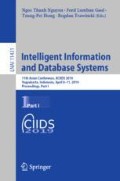Abstract
Before starting the subsequent academic year, the management staff from each organizational unit (faculty, department, research unit, etc.) must solve the university course timetabling problem (UCTP). UCTP belongs to the class of NP-difficult computational problems, thus its optimal solution becomes a challenge, even for small organizational units. Additionally, the process of searching for solutions is complicated by the need to take account of additional constraints resulting from local conditions, teachers’ and students’ preferences, etc. as well as held limited resources. For the management of a given organizational unit at the university, at the beginning of this process, it is important to find an answer to the question: are we able, given the held resources and existing constraints, to find any UCTP problem solution? Only in the next step we can consider finding an optimum solution according to the selected criterion. It seems that every missing resource can be supplemented (acquired, rented, modified etc.). It is a well-known fact from practice that the greatest problem is related to supplementing the missing competences of academic teachers. You can hire new teachers, already employed teachers can acquire new missing competences or you can manage the available set of competences in a different way. However, the solution to this problem (competences configuration) is key even before solving UCTP.
The article presents the data-driven based approach to modeling and solving the academic teachers’ competences configuration problem for the university’s organizational units of various sizes.
Access this chapter
Tax calculation will be finalised at checkout
Purchases are for personal use only
References
Wikarek, J.: Lecturers’ competences configuration model for the timetabling problem. In: Ganzha, M., Maciaszek, L., Paprzycki, M. (eds.) Proceedings of the 2018 Federated Conference on Computer Science and Information Systems, ACSIS, vol. 15, pp. 441–444 (2018). http://dx.doi.org/10.15439/2018F143
Gotlib, C.C.: The construction of class-teacher timetables. Proc. IFIP Cong. 62, 73–77 (1963)
Babaei, H., Karimpour, J., Hadidi, A.: A survey of approaches for university course timetabling problem. Comput. Ind. Eng. 86, 43–59 (2015)
Redl, T.A.: A study of university timetabling that blends graph coloring with the satisfaction of various essential and preferential conditions. Ph.D. Thesis, Rice University, Houston, Texas (2004)
Asmui, H., Burke, E.K., Garibaldi, J.M.: Fuzzy multiple heuristic ordering for course timetabling. In: The proceedings of the 5th United Kingdom Workshop on Computational Intelligence (UKCI05), London, UK, pp. 302–309 (2005)
Abdullah, S., Burke, E.K., McCollum, B.: Using a randomised iterative improvement algorithm with composite neighbourhood structures for the university course timetabling problem. In: Doerner, K.F., Gendreau, M., Greistorfer, P., Gutjahr, W., Hartl, R.F., Reimann, M. (eds.) Metaheuristics. ORSIS, vol. 39, pp. 153–169. Springer, Boston, MA (2007). https://doi.org/10.1007/978-0-387-71921-4_8
Mühlenthaler, M.: Fairness in academic course timetabling. In: Mühlenthaler, M. (ed.) Fairness in academic course timetabling. LNE, vol. 678, pp. 75–105. Springer, Cham (2015). https://doi.org/10.1007/978-3-319-12799-6_3
Sitek, P., Wikarek, J.: A hybrid programming framework for modeling and solving constraint satisfaction and optimization problems. Sci. Program. 2016 (2016). Article ID 5102616. https://doi.org/10.1155/2016/5102616
Sitek, P., Wikarek, J.: A multi-level approach to ubiquitous modeling and solving constraints in combinatorial optimization problems in production and distribution. Appl. Intell. 48, 1344–1367 (2018). https://doi.org/10.1007/s10489-017-1107-9
Schrijver, A.: Theory of Linear and Integer Programming. Wiley, Hoboken (1998). ISBN 0- 471-98232-6
Home LINDO. www.lindo.com. Accessed 20 Dec 2018
Zwolińska, B., Grzybowska, K.: Shaping production change variability in relation to the utilized technology. In: 24th International Conference on Production Research (ICPR 2017), pp. 51–56 (2017). ISBN 978-1-60595-507-0, ISSN 2475-885X
Nielsen, I., Dang, Q.-V., Nielsen, P., Pawlewski, P.: Scheduling of mobile robots with preemptive tasks. In: Omatu, S., Bersini, H., Corchado, J.M., Rodríguez, S., Pawlewski, P., Bucciarelli, E. (eds.) Distributed Computing and Artificial Intelligence, 11th International Conference. AISC, vol. 290, pp. 19–27. Springer, Cham (2014). https://doi.org/10.1007/978-3-319-07593-8_3
Bocewicz, G., Nielsen, I., Banaszak, Z.: Production flows scheduling subject to fuzzy processing time constraints. Int. J. Comput. Integr. Manuf. 29(10), 1105–1127 (2016). https://doi.org/10.1080/0951192X.2016.1145739
Sitek, P., Wikarek, J.: Capacitated vehicle routing problem with pick-up and alternative delivery (CVRPPAD) – model and implementation using hybrid approach. Ann. Oper. Res. 273, 257–277 (2017). https://doi.org/10.1007/s10479-017-2722-x
Kłosowski, G., Gola, A., Świć, A.: Application of fuzzy logic in assigning workers to production tasks. Distributed Computing and Artificial Intelligence, 13th International Conference. AISC, vol. 474, pp. 505–513. Springer, Cham (2016). https://doi.org/10.1007/978-3-319-40162-1_54
Author information
Authors and Affiliations
Corresponding author
Editor information
Editors and Affiliations
Appendices
Appendix A
Appendix B Data for Examples P1 and P1a

Rights and permissions
Copyright information
© 2019 Springer Nature Switzerland AG
About this paper
Cite this paper
Wikarek, J., Sitek, P. (2019). A Data-Driven Approach to Modeling and Solving Academic Teachers’ Competences Configuration Problem. In: Nguyen, N., Gaol, F., Hong, TP., Trawiński, B. (eds) Intelligent Information and Database Systems. ACIIDS 2019. Lecture Notes in Computer Science(), vol 11431. Springer, Cham. https://doi.org/10.1007/978-3-030-14799-0_35
Download citation
DOI: https://doi.org/10.1007/978-3-030-14799-0_35
Published:
Publisher Name: Springer, Cham
Print ISBN: 978-3-030-14798-3
Online ISBN: 978-3-030-14799-0
eBook Packages: Computer ScienceComputer Science (R0)

